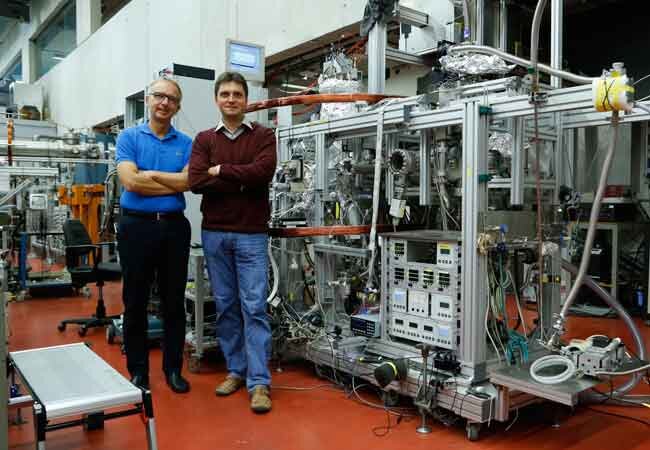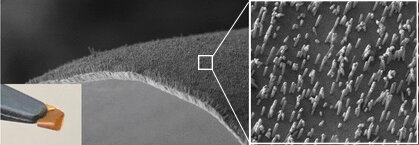#Dinosaurs were in their prime, not in decline, when fateful asteroid hit

Table of Contents
“Dinosaurs were in their prime, not in decline, when fateful asteroid hit”

Paleontologists agree that a massive asteroid strike triggered the end of the dinosaurs, but a debate has persisted over the reptiles’ overall state at the time of the fateful collision.
Were non-avian dinosaurs already in decline, and the asteroid just sped up their trudge toward extinction?
Or were they thriving in the late Cretaceous, only to be snuffed out by an ill-timed space rock?
A recent study led by the University of Edinburgh provides new evidence that dinosaurs were going strong at the time of their sudden demise. By combing through the fossil record to reconstruct the food webs of the millennia before and after the asteroid’s strike, the researchers also shed new light on how some mammals and birds survived a catastrophe that brought 165 million years of dinosaur life to an end.
“This is a very interesting study that uses an approach not often used in vertebrate paleontology,” said paleontologist Luis Chiappe, director of the Dinosaur Institute at the Natural History Museum of Los Angeles County, who was not involved with the research. “The results are solid.”
The study, published this month in the journal Science Advances, reviewed more than 1,600 fossil specimens dating from the 18 million years before the asteroid struck—the last years of the Cretaceous period—to the first 4 million years of the Paleogene period, which began the day the 7.5 mile-wide rock smashed into what is now Mexico’s Yucatan Peninsula.
The fossils represented virtually every type of animal that was eating and being eaten during that stretch of time, from fish, salamanders and frogs to crocodilians, dinosaurs and mammals.
Looking at the numbers of remains found, the researchers concluded that dinosaurs enjoyed a stable, robust place in the ecological web at the time of their deaths, with no suggestion in the fossil record that their food sources were in decline, said lead author Jorge García-Girón, an ecologist with both Finland’s University of Oulu and Spain’s University of León.
With far less security in the food web than their dinosaur counterparts, mammals spent the late Cretaceous trying to gain a small, furry foothold in a landscape dominated by giant reptiles. Researchers found a wide diversity of mammal species, suggesting a family in the process of adapting to their world.
“It’s kind of a trade-off,” said García-Girón. “The dinosaurs were far more stable in their ecologies. They were, of course, masters of their ecosystem. Mammals, on the other side, were diversifying and starting to colonize different habitats and different environments.”
When the asteroid struck, this flexibility may have been mammals’ salvation.
The Cretaceous-Paleogene extinction, or K/Pg event, wiped out an estimated 75% of the species on the planet at the time. When the impact came, and the subsequent fires and clouds of particulate matter roasted the landscape and transformed the atmosphere, most dinosaurs could not burrow underground, fly to safer territory or immerse themselves in water to ride out the worst, as surviving species did.
“The asteroid impact was so great that there was no place on the surface of the Earth that was truly safe,” author Riley Black wrote in the book “The Last Days of the Dinosaurs: An Asteroid, Extinction, and the Beginning of Our World”. “When the air itself became deadly, there was little that could be done for terrestrial life.”
Dinosaurs were ideally suited to the landscapes and climate of the late Cretaceous. When an unprecedented, unexpected event eliminated that world overnight, the dinosaurs went with it.
While the new research answers questions about a significant event in the planet’s past, it may also help scientists interpret its future. Understanding the five mass extinction events in the prehistoric record can help us anticipate the ways plant and animal species may suffer and decline as a result of human-induced climate change.
Freshwater species, for example, are quickly disappearing already, García-Girón said. “If we’re able to discern what kind of factors determined survivorship of freshwater fauna in the past, we might want to use that information to predict the consequences of freshwater biodiversity loss happening in our time,” he said.
Jorge García-Girón, Shifts in food webs and niche stability shaped survivorship and extinction at the end-Cretaceous, Science Advances (2022). DOI: 10.1126/sciadv.add5040. www.science.org/doi/10.1126/sciadv.add5040
2022 Los Angeles Times.
Distributed by Tribune Content Agency, LLC.
Citation:
Dinosaurs were in their prime, not in decline, when fateful asteroid hit (2022, December 25)
retrieved 26 December 2022
from https://phys.org/news/2022-12-dinosaurs-prime-decline-fateful-asteroid.html
This document is subject to copyright. Apart from any fair dealing for the purpose of private study or research, no
part may be reproduced without the written permission. The content is provided for information purposes only.
If you liked the article, do not forget to share it with your friends. Follow us on Google News too, click on the star and choose us from your favorites.
For forums sites go to Forum.BuradaBiliyorum.Com
If you want to read more Like this articles, you can visit our Science category.


